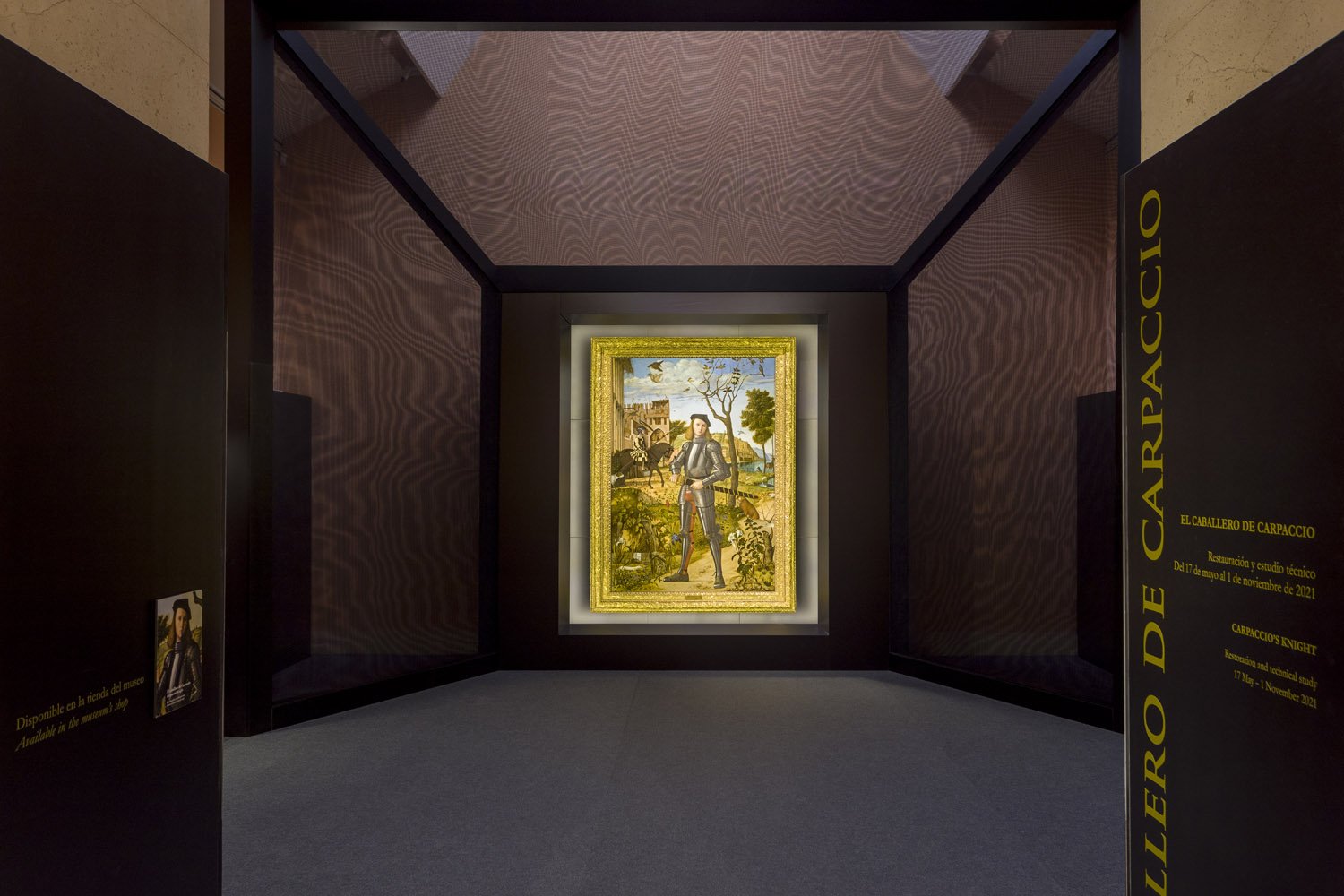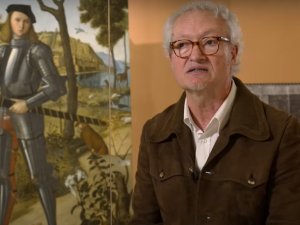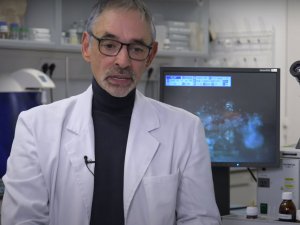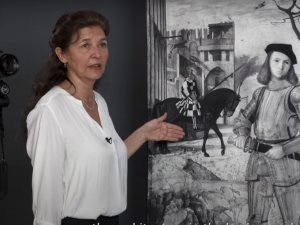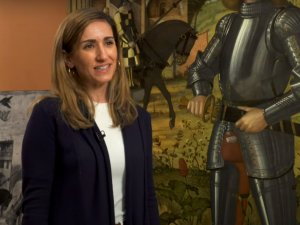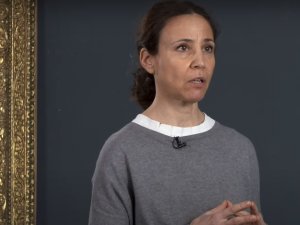Restoration and technical study
Carpaccio’s Knight is a painting that is as dazzling as it is enigmatic. We still do not know the man’s identity, even though historians have been coming up with various hypothesis for the past century. The most recent proposal, put forward by Professor Augusto Gentili, is that he is a Venetian captain stationed at a naval base in Greece who was defeated by the Turks and beheaded in Istanbul.
The work was acquired by Heinrich Thyssen senior in 1935 from the prestigious Kahn Collection. It was his son Heini who in 1957 commissioned the restoration work that proved decisive: the overpaint was removed, revealing two cartellini , one bearing the knight’s motto and the other Carpaccio’s signature, as well as the reflections in the armour and the warrior’s melancholic gesture.
First and foremost, the technical study allowed us to discover details that were changed during the execution process: there was initially a smaller horse beneath the one that is visible as well as another deer beneath the final one; the artist also modified the knight’s gaze and added the bare oak tree which, as Sedano notes, appears to be an allusion to the young man’s death and may confirm that the portrait was painted posthumously.
El vídeo de arriba es para uso exclusivamente decorativo dentro de está página.
Hidden landscape
The the paint layers is executed in firm, concise strokes. These are particularly evident in the design of the main figures and in the architectural features and background landscape.
Starting from an initial design, Carpaccio progressively completed the picture with modifications and additions, further enriching the message he wished to convey to the viewer. Precise strokes of the figure of a deer depicted on the right side can be seen in the infrared image. The artist modified its outline in the final composition.
Beneath the paint layers of the water of the lake, which was deliberately covered over, we find the outline of another deer, which could be the initial position of the one now visible on the right.
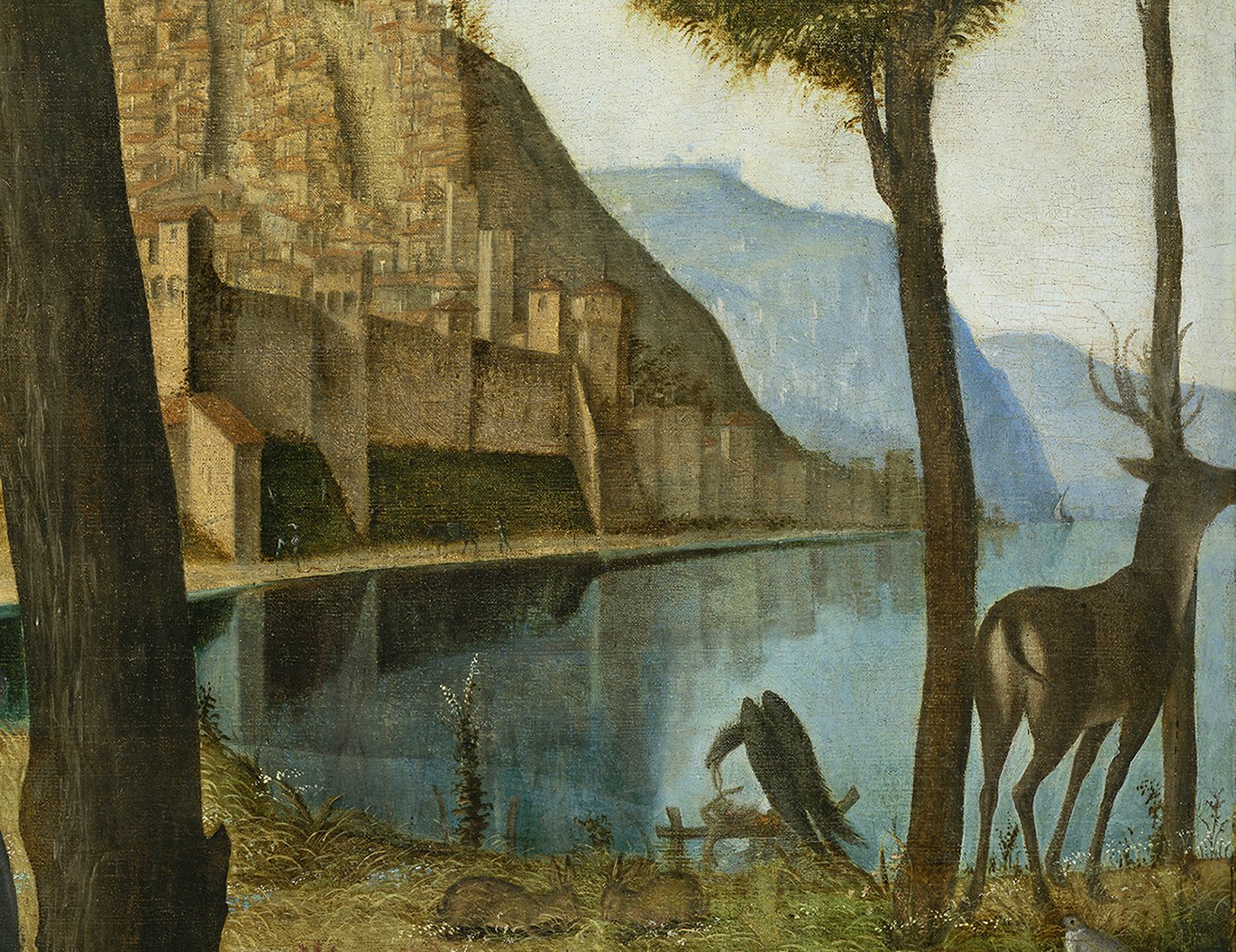
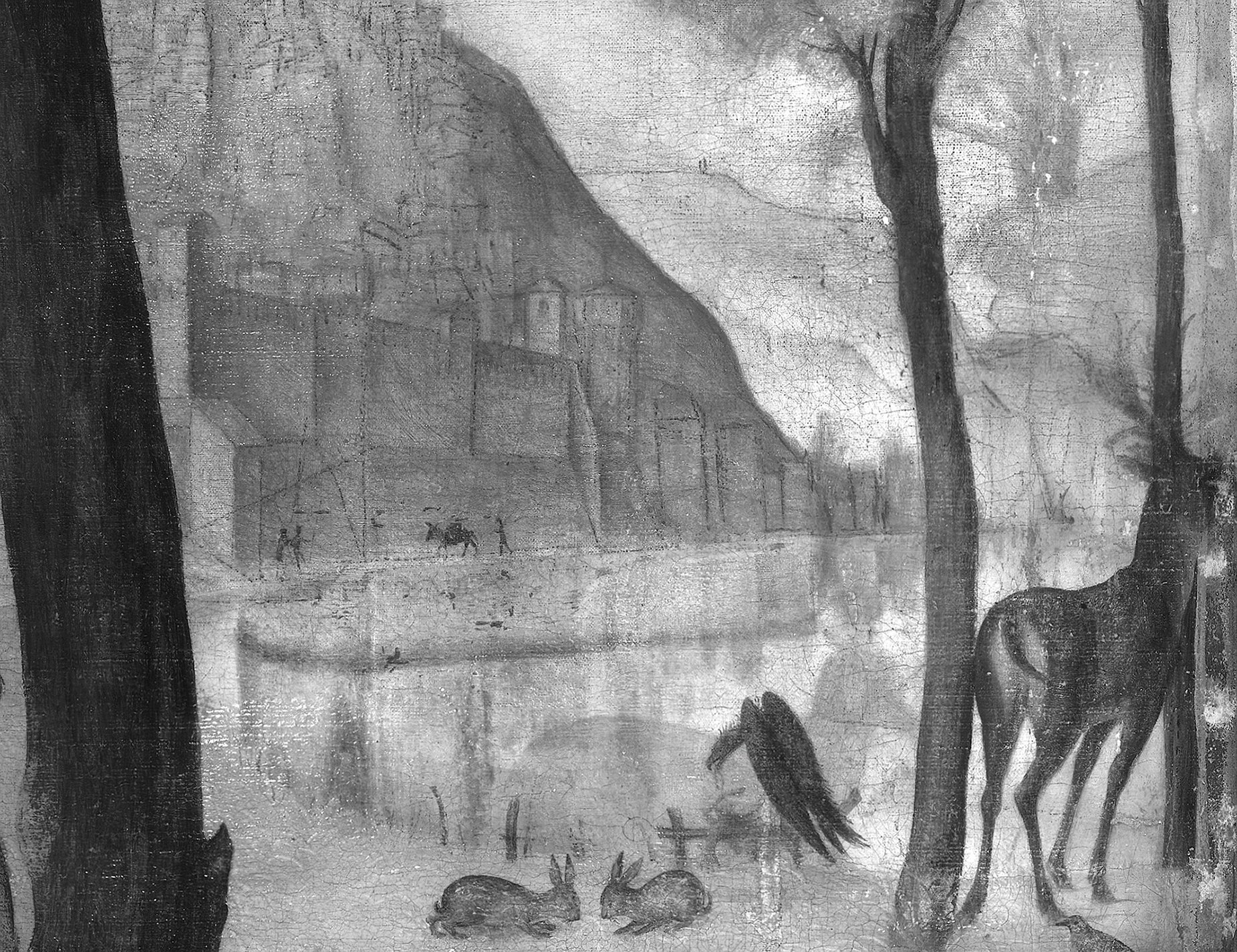
An unusual pigment
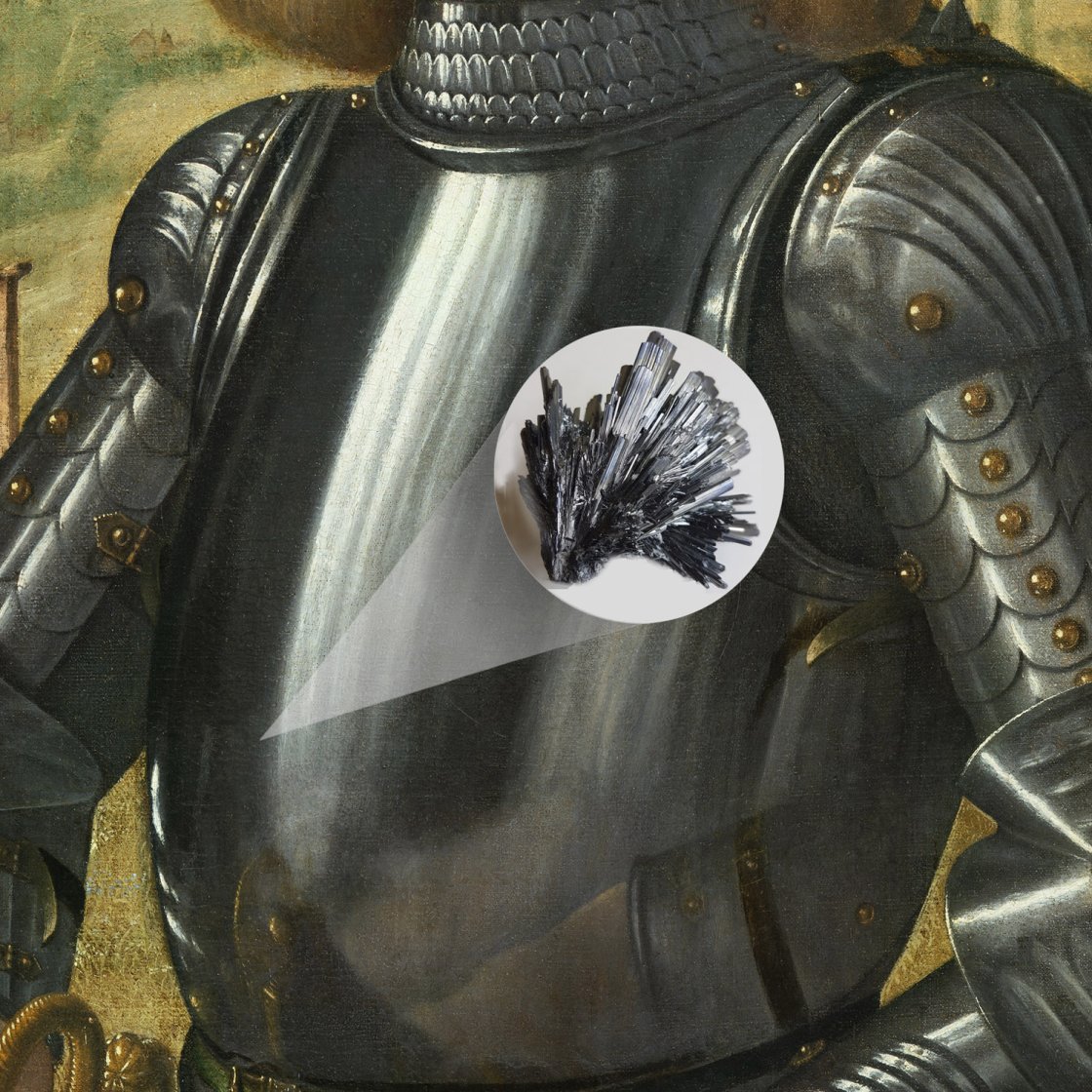
Analyses conducted by the chemistry laboratory revealed that Carpaccio employed a pigment that is unusual in painting, stibnite. This pigment was normally used to make bells and metal objects. Carpaccio sought and achieved the effect of a metallic gleam in the knight’s armour.
Stibnite, also called antimonite, is a naturally occurring mineral, an ore of antimony (antimony sulphide), which in pigment form is dark grey in colour. The ore is abundant in a few areas of Italy and was also widely used in Germany, from which it was exported to Venice smelted in cakes for casting bells and for other uses such as earthenware, casting, making mirrors and medicinal purposes.
The enigma of the inscription
The creative process of this painting attests to the mastery and experience of Vittore Carpaccio, who carefully defined the scene before starting to paint. This allowed him to lay out the main forms and limit modifications to minor details that arose during the paint stage. That way he achieved a magnificent, complex, and beautiful composition imbued with powerful symbolism.
X-radiography reveals the existence of an inscription in the upper part of the painting that cannot be seen by the naked eye and reads from back to front ‘A. Durer’. The inscription must have been made using a pigment that is visible under X-ray and on the reverse of the original canvas, which is now concealed by a reinforcing canvas.
El vídeo de arriba es para uso exclusivamente decorativo dentro de está página.
Special display
Young Knight in a Landscape by Vittore Carpaccio (c. 1505), one of the museum’s most iconic works, was restored throughout 2020 and part of 2021. The work was carried out in room 11 of the museum in full view of the public.The results of the restoration and the technical studies conducted will be on show from 17th May 2021 to 25th September 2022 in a special display in the room and have also been put together in a video and a publication.
The technical studies and analyses of the materials found in the painting made it possible to examine it in depth in order to gain detailed knowledge of the artist’s creative process and working method. The specific information gleaned from these studies enabled us to undertake a thorough restoration with utmost respect for the work.
Restoration not only allows us to read the work as it was intended but also helps ensure its conservation in the best possible condition. For this purpose, the support has been stabilised, fragile areas of the paint have been consolidated, and the old, yellowed varnish that coated the surface and completely distorted the artist’s lighting effects and combinations of colours has been removed. The frame that enhances and protects the painting has also been restored.
Discover the restoration and techniques used
The series consists of six videos containing the reflections of several members of the Conservation Department team who were involved in the process of restoring Vittore Carpaccio’s Young Knight in a Landscape (about 1505).
They reveal the lines of action and explain the procedures carried out during restoration: what it consisted of and the importance of interpretation and combining various techniques and analyses in order to draw an overall conclusion and establish a single line of action.

